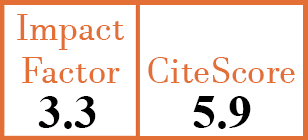Full Papers
Web search trends on fibromyalgia: development of a machine learning model
M.L.G. Leoni1, M. Mercieri2, A. Paladini3, M. Cascella4, M. Rekatsina5, F. Atzeni6, A. Pasqualucci7, L. Bazzichi8, F. Salaffi9, P. Sarzi-Puttini10, G. Varrassi11
- Department of Medical and Surgical Sciences and Translational Medicine, Sapienza University of Rome, Italy. matteolg.leoni@gmail.com
- Department of Medical and Surgical Sciences and Translational Medicine, Sapienza University of Rome, Italy.
- Department of Life, Health and Environmental Sciences, Università degli Studi dell'Aquila, Italy.
- Department of Medicine, Surgery and Dentistry, University of Salerno, Baronissi, Italy.
- Department of Anaesthesia and Pain Management, National and Kapodistrian University of Athens, Greece.
- Rheumatology Unit, Department of Experimental and Internal Medicine, University of Messina, Italy.
- Anaesthesiology and Critical Care, University of Perugia, Italy.
- Department of Rheumatology, IRCCS Galeazzi-Sant'Ambrogio Hospital, Milan, Italy.
- Rheumatology Unit, Dipartimento di Scienze Cliniche e Molecolari, Università Politecnica Delle Marche, Ancona, Italy.
- Department of Rheumatology, IRCCS Galeazzi-Sant'Ambrogio Hospital, Milan; and Department of Biomedical and Clinical Sciences, University of Milan, Italy.
- Fondazione Paolo Procacci, Rome, Italy.
CER18867
2025 Vol.43, N°6
PI 1082, PF 1094
Full Papers
Free to view
(click on article PDF icon to read the article)
PMID: 40492453 [PubMed]
Received: 26/04/2025
Accepted : 19/05/2025
In Press: 09/06/2025
Published: 27/06/2025
Abstract
OBJECTIVES:
Fibromyalgia (FM) is a chronic pain condition characterised by widespread musculoskeletal pain, fatigue, and cognitive dysfunction. The growing reliance on the internet for health-related information has transformed how individuals seek medical knowledge, particularly for complex conditions like FM. This study aimed to analyse online search behaviours related to FM across multiple countries, identify temporal trends, and assess machine learning models for predicting search interest.
METHODS:
Google Trends data (2020–2024) were analysed across sixteen countries. Time-series analysis, linear regression, and the Mann-Kendall trend test assessed monotonic trends, while seasonal decomposition identified periodic fluctuations. An Auto-Regressive Integrated Moving Average (ARIMA) model forecasted search volumes for 2025. Machine learning models, including Random Forest (RF) and Extreme Gradient Boosting (XGBoost), were used to predict search trends, with feature importance evaluated using SHAP (Shapley Additive Explanations) values.
RESULTS:
Search interest in FM varied across countries, with China, the UK, the USA and Canada showing the highest engagement, while Peru, Spain and Turkey had the lowest. Brazil, Italy and the UK exhibited rising search trends, whereas Argentina, Canada, Greece and the USA showed declines. Seasonal analysis revealed mid-year peaks in Brazil and Italy, while Turkey saw late autumn increases. ARIMA forecasting predicted stable or increasing trends in Brazil, Canada and Mexico, while Germany and Venezuela showed slight declines. Machine learning analysis identified short-term search history (search volumes from the previous day, week, and month) as the most influential predictor.
CONCLUSIONS:
Understanding online search behaviour can enhance FM education. Targeted awareness campaigns and improved digital health literacy initiatives could sustain engagement and improve patient knowledge. Future efforts should focus on optimising online health resources and integrating evidence-based decision aids.



